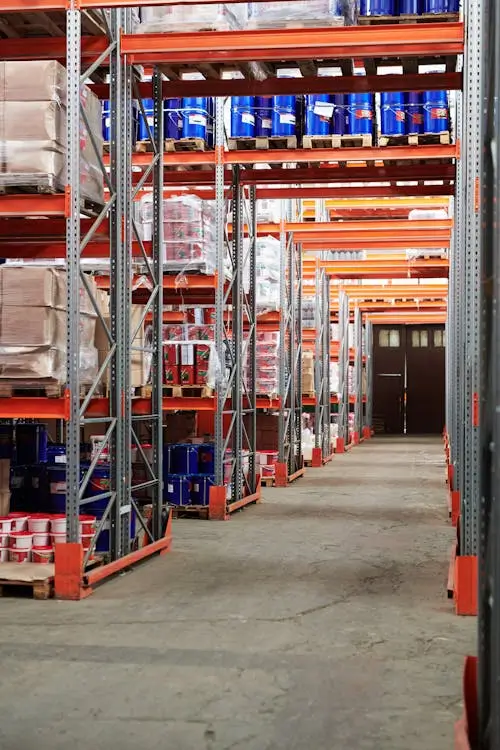The primary risk of Unstable or Overloaded Shelve is the risk of collapse of the shelve. This collapse could lead to damage of the shelve and/or damage to an individual or group of individuals who may have been around the shelve at the time of the collapse.
Risk of Unstable or Overloaded Shelve
There are lots of risk associated with using unstable shelve or overloading the the shelve, but before we get to that, lets us consider some reasons people use unstable shelve or overload the shelve in the first place.
Unstable or overloaded shelve is one of the hazards of storage. Shelve are often overloaded for several reasons which includes:
Reasons for Overloading Shelves or Using Unstable Shelve
- Because of limited number of shelve
- Non-availability of structurally good shelves
- Because of limited space to fix in more shelves
- Due to negligence
- Poor hazard awareness of the danger of overloading
- Poor management commitment
10 Risk of Unstable or Overloaded Shelve
1. Overloading shelves can compromise the structural integrity of the shelve leading to collapse and potential injury to individuals nearby.
2. Excessive weight on shelves can cause goods to become crushed or damaged, resulting in financial losses for the business.
3. Employees may be exposed to musculoskeletal injuries while attempting to lift or handle heavy items placed on overloaded shelves.
4. Overloading shelves makes it difficult for employees to access items safely, increasing the risk of accidents and workplace injuries.
5. Overloaded shelves can obstruct fire exits and hinders firefighting efforts, increasing the risk of fire-related injuries and property damage.
6. Overloading shelves is a violation of safety regulations and standards set by authorities, leading to fines, penalties, or legal consequences for the business.
7. Incidents resulting from overloaded shelves, such as accidents or injuries, can tarnish the reputation of the business, resulting in negative publicity and long-term damage to its image.
14 Steps to Minimize the Risk of an Unstable or Overloaded Shelve
- Stack lumber no more than 16 feet high if it is handled manually, and no more than 20 feet if using a forklift
- Remove all nails from used lumber before stacking
- Stack and level lumber on solidly supported bracing
- Ensure that stacks are stable and self-supporting
- Do not store pipes and bars in racks that face main aisles to avoid creating a hazard to passersby when removing supplies
- Stack bags and bundles in interlocking rows to keep them secure
- Stack bagged material by stepping back the layers and cross-keying the bags at least every ten layers (to remove bags from the stack, start from the top row first)
- Store baled paper and rags inside a building no closer than 18 inches to the walls, partitions, or sprinkler heads
- Band boxed materials or secure them with cross-ties or shrink plastic fiber
- Stack drums, barrels, and kegs symmetrically
- Block the bottom tiers of drums, barrels, and kegs to keep them from rolling if stored on their sides
- Place planks, sheets of plywood dunnage, or pallets between each tier of drums, barrels, and kegs to make a firm, flat, stacking surface when stacking on end, etc.
- Chock the bottom tier of drums, barrels, and kegs on each side to prevent shifting in either direction when stacking two or more tiers high;
- Stack and block poles as well as structural steel, bar stock, and other cylindrical materials to prevent spreading or tilting unless they are in racks.
Conclusion
Stacking is something that most of us do in our workplaces, and stacking are mostly done in shelves. There is a right way, guidelines and safety measures to follow to ensure safe stacking, but some persons indulge of different unsafe practices like stacking on an unstable shelve or overloading the shelve.
This blog post have covered “The Risk of Unstable or Overloaded Shelve“. We have highlighted the reasons people indulge in this unsafe acts and also mentioned the risk associated with this acts; to round it up, we have put out the guidelines for safe stacking according to OSHA.
If you have been involved in stacking process, ensure that you avoid these unsafe acts and follow the safe guidelines to keep everyone safe and also avoid creating liability for your organization.
Related Posts
How to Determine Your Crane Load Capacity for Safe Performance
What is Safe Working Load (SWL)
Safe Working Load Racking Regulations
Can I Be Disciplined For Having An Accident At Work
What Is Housekeeping And Effects Of Poor Housekeeping


